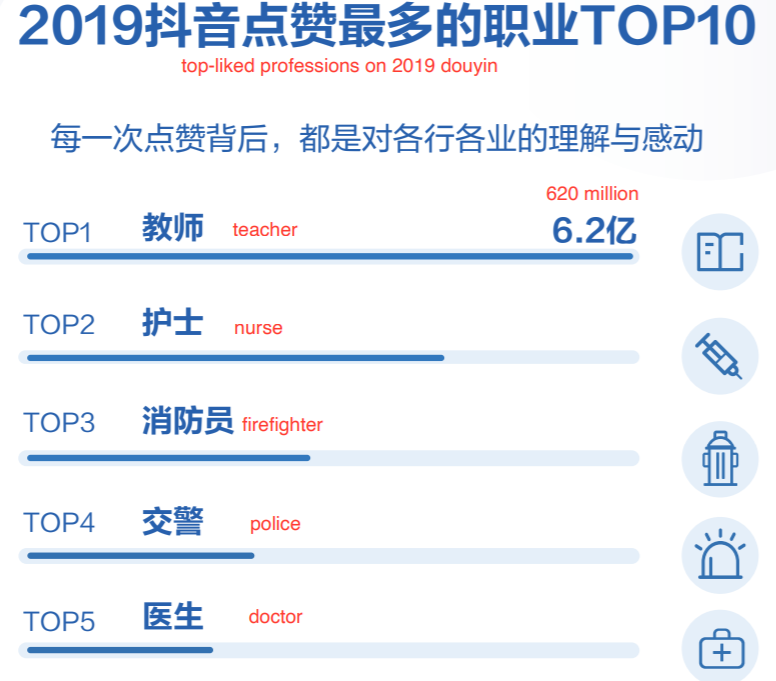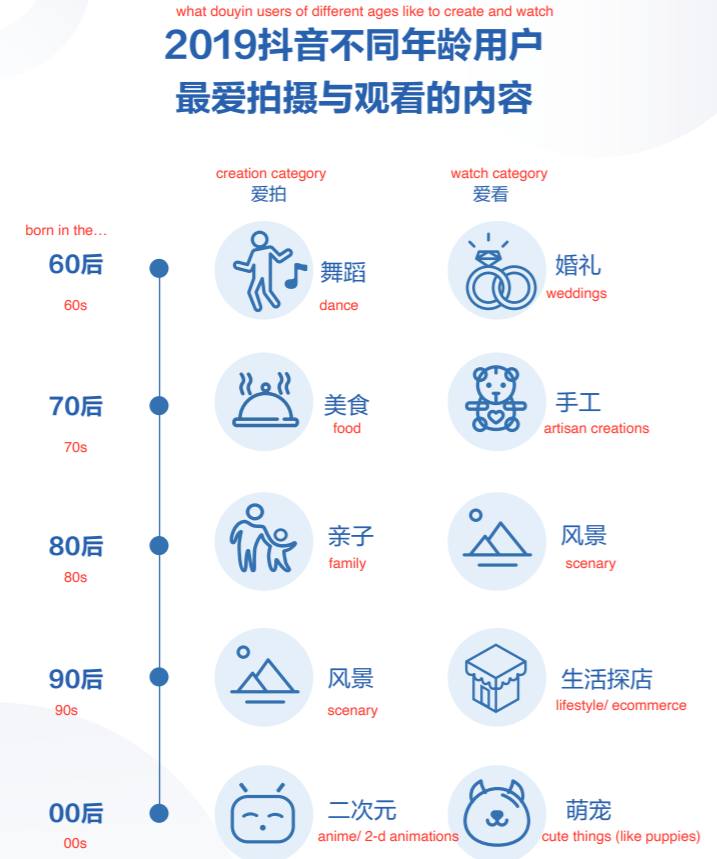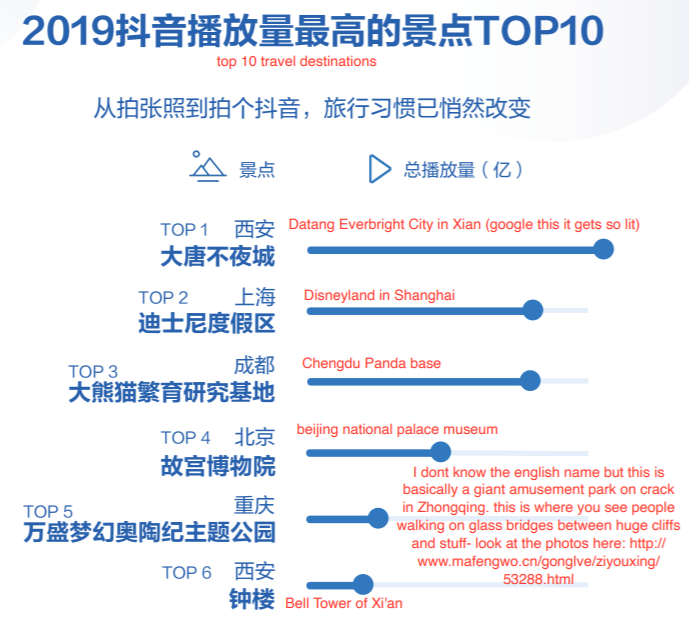Chinese 60 yr olds love doing dance vids and watching weddings
Takeaway
The Chinese version of Tik Tok shows a surprising diversity in user base and content
Douyin 2019 data report
Douyin is the Chinese version of short video app Tik Tok; both are owned by Bytedance [1]. Katherine Wu translated the 2019 data report that Douyin published here, below are my highlights:
Douyin claims >400mm daily active users DAUs
Note that Douyin is only popular in China, so this doesn’t include Tik Tok’s userbase internationally. We can quibble over how they define daily actives and the quality of chinese data, but even if we haircut that number, it’s still large. Obviously this is a threat to WeChat (owned by Tencent), the main social app in China with 1.1bn monthly active users.
What’s also interesting for people watching Douyin/Tik Tok’s growth is the global nature of it. I can’t find a reliable DAU number for Tik Tok, but let’s assume it’s in the hundreds of millions as well [2] based on this article. We’re seeing possible the first app that is used widely both in the insulated China tech ecosystem and the open Western one. It’s not just a problem to WeChat, it’s also one to Facebook (1.7bn DAUs) and Snapchat (200mm DAUs).
The report also shows the professions that got the most likes on their videos:

I’m wondering if these groups have already found ways to monetise their popularity. Teachers have, via live streaming their classes [3]. The other professions all seem to be emergency services; would people pay for regular content from these jobs? There might be a market for realistic, educational content about the roles, to inform people interested in those careers. Like a “This is the day in the life of a doctor”.
The report also shows the top categories of videos created and watched by different generations:

Anime has risen in popularity in Asian countries, contributing to the growth in companies such as Bilibili. The manga/anime series One Piece has made more money than Lord of the Rings. I’d be bullish on anime continuing to grow as a segment.
I’m wondering how many weddings the ’60s people are watching that it’s the most watched category.
The Chinese locations that had the most amount of short videos taken there:

In case you wanted to know what Chinese people visited within their own country. I’m actually surprised Disneyland wasn’t number one, goes to show how much I still don’t know about China.
Katherine Wu gives some takes of her own as well:
The behavioral differences between Douyin and Tiktok also underscore one major thing to me: there really isn’t a ‘one-size-fit-all’ social app that exists. Different regions like different types of content, even though the medium itself (in this case, short-form video) is the same
That’s the power of being a platform at scale, where you’re just [4] hosting whatever users are creating and then extracting value from that. Once you’ve hit product market fit, it’s easier for you to scale compared to a distributor that creates all their own content. Your users will fragment into their niches and find each other; the dance loving grandma will find the wedding loving photographer. You don’t need to make one type of content that’s one-size-fit-all, but can depend on users to create thousands of types of content to cater to their own interests.
Cultural factors (geography, age, local pop culture) play a huge role in how users end up using a product. […] I remember when the first McDonalds and KFCs opened up in my hometown in China. KFC ended up doing sales that were multiples of McDonalds in the first year there because they were SUPER flexible on their menu items and incorporated a lot of local food items (Chinese soymilk, 油条, congee and the like)
I’ve written briefly on the history of KFC in China, which was supposedly a reputation, management, and localisation effort to achieve superiority.
Here are my unanswered questions after reading the report (and likely won’t be answered):
- What is the DAU figure for Tik Tok?
- What is the churn rate of users for Douyin, and for Tik Tok?
- How much is Douyin and Tik Tok paying to acquire users? I’ve seen reports saying they’re burning a lot of cash for low retaining users, but nothing official yet
- What is the user breakdown for Douyin? By age, income, and geography? The data report implies a broad mix; I find that unlikely
- What user group monetises the most effectively?
- How much time are Douyin and Tik Tok users spending in app?
Note to paid subscribers
Thank you to everyone who’s subscribed for paid weekly updates recently! As a reminder, although the monthly updates are on finance and tech, the weekly ones are shorter, less polished posts on any random topic I find interesting, and can range from illusions in time to art techniques. Also, all posts get uploaded on my blog after a substantial delay; the big benefit of subscribing is to get posts directly and early [5]. Just making sure everyone knows what they’re getting into. Always happy to send paywalled articles to people you think might be interested in them as well, just lmk.
Footnotes
- Tik Tok was an international release of Douyin to get around censorship requirements. It then bought Musical.ly to accelerate its growth. I’m unclear atm how many users were Musical.ly vs original Tik Tok users.
- The verge article quotes a few hundred million monthly active users (MAU), based on another SMCP post. MAUs are a less restrictive way of counting users and will result in a higher number than counting DAUs.
- The article seems dated, but I’m sure I read about China live streaming tuition recently as well
- Ok, not just, it’s a difficult, multi-billion business to do so, but you get the point.
- Plus supporting a starving artiste, but nobody usually cares about that. And yes, I know this is not the most effective sales pitch that want to support my writing but not censor me.
If you liked this, sign up for my monthly finance and tech newsletter: